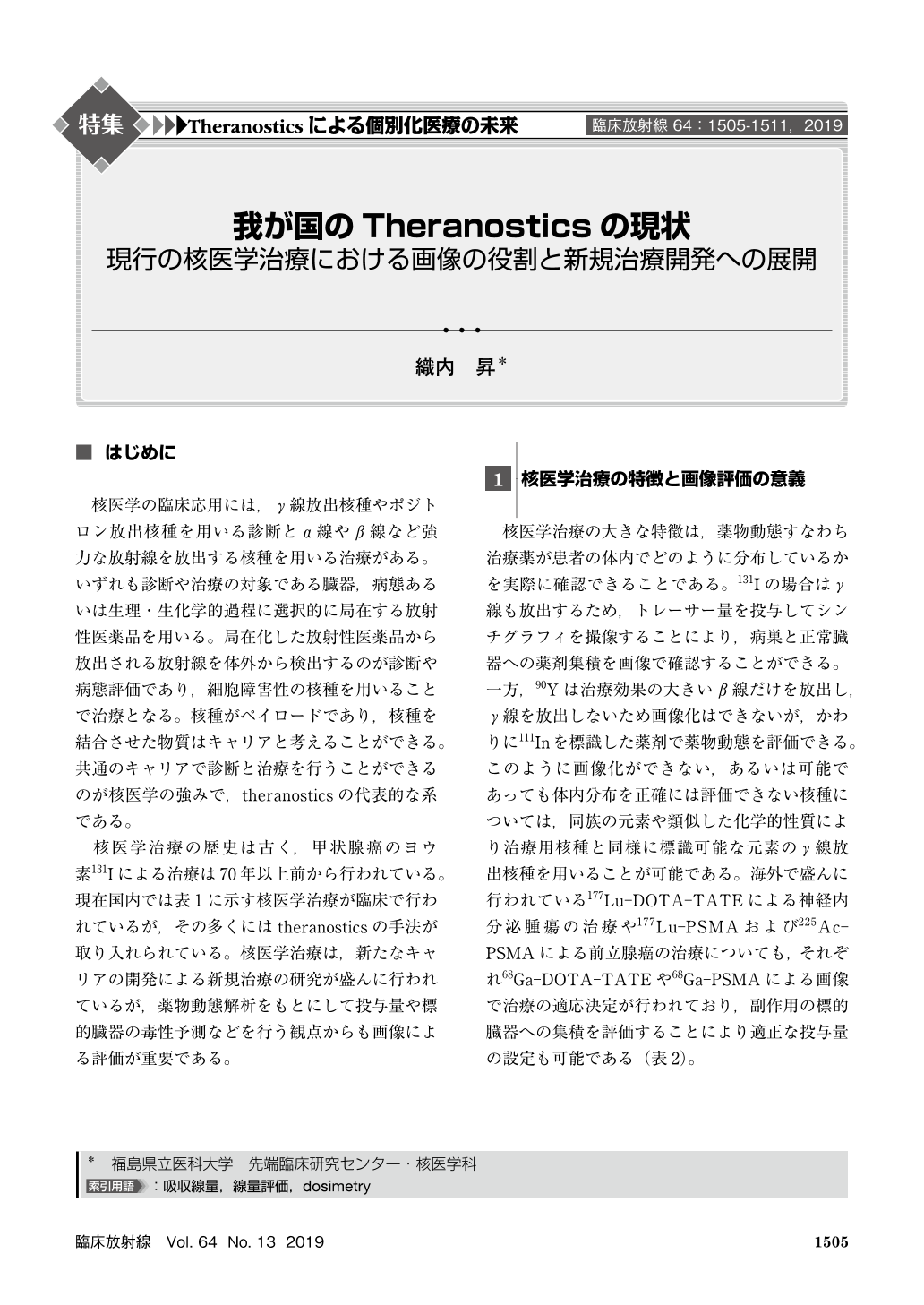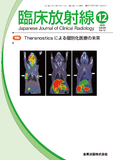Japanese
English
- 有料閲覧
- Abstract 文献概要
- 1ページ目 Look Inside
- 参考文献 Reference
核医学の臨床応用には,γ線放出核種やポジトロン放出核種を用いる診断とα線やβ線など強力な放射線を放出する核種を用いる治療がある。いずれも診断や治療の対象である臓器,病態あるいは生理・生化学的過程に選択的に局在する放射性医薬品を用いる。局在化した放射性医薬品から放出される放射線を体外から検出するのが診断や病態評価であり,細胞障害性の核種を用いることで治療となる。核種がペイロードであり,核種を結合させた物質はキャリアと考えることができる。共通のキャリアで診断と治療を行うことができるのが核医学の強みで,theranosticsの代表的な系である。
Targeted radionuclide therapy(TRT)works for multiple metastases and dissemination of cancer. Specific feature of TRT is using target-specific compounds labeled with γ or positron-emitting radionuclides for imaging and β or α-emitting radionuclides for therapy. This concept is so-called theranostics, that visualize target binding for efficacy evaluation and uptake in the organ-at-risk for toxicity assessment. Although present TRT does not usually perform dosimetry-based therapy, precision TRT would be done by quantitative dose-setting in the future. Development of targeted α-particle therapy with 211At will be the case to establish effective dose to the targets, while securing permissible level of radiation to the risk organs.

Copyright © 2019, KANEHARA SHUPPAN Co.LTD. All rights reserved.


